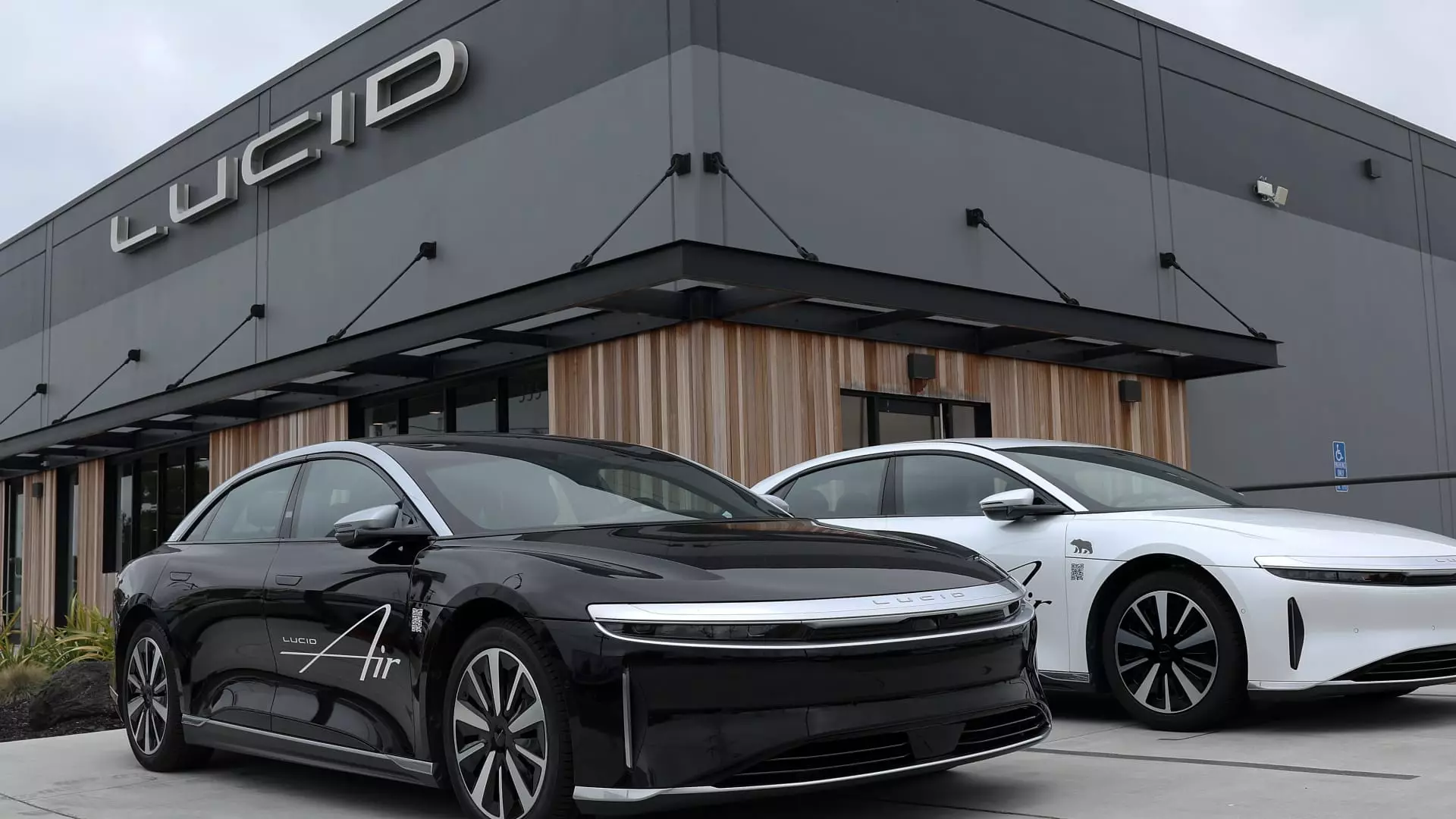Electric vehicle manufacturer Lucid Group recently released its third-quarter results, showcasing a complex financial picture that slightly exceeded Wall Street’s expectations. With an adjusted loss per share of 28 cents, a marginal improvement over the anticipated 30-cent loss, the company generated revenue of $200 million versus the projected $198 million. Despite these small victories, Lucid’s net loss ballooned to $992.5 million, significantly widening from last year’s loss of $630.9 million. CEO Peter Rawlinson characterized this quarter as a pivotal moment for the company, drawing attention to both record vehicle deliveries of 2,781 units and ongoing cost-cutting initiatives.
The stock market responded positively after the earnings report, with shares rising more than 8% in after-hours trading. Yet, looking at the broader picture reveals a grim reality for Lucid: it has experienced a dramatic 45% decline in share value this year. This substantial dip underscores the ongoing challenges the company faces, marked by an elongated path to profitability and the unpredictable ebb and flow of consumer sales.
Rawlinson’s emphasis on cost-cutting measures is particularly noteworthy as Lucid endeavors to stabilize its finances while ramping up production. The company reported significant increases in its research and development costs, tallying $324.4 million in the third quarter—up 40.1% from the previous year. Selling, general, and administrative expenses also rose by 23.1% to $233.6 million. Despite these rising costs, it is crucial for the company to streamline other areas, especially as it prepares for the release of its upcoming SUV, Gravity, expected to roll out by the end of this year.
The fact that Lucid remains committed to producing approximately 9,000 vehicles in 2024, a forecast presenting a 6.8% increase from 2023’s figures, suggests an optimistic resolve. This ambitious target may be bolstered by the company’s robust liquidity position, boasting $5.16 billion at the end of the quarter. This significant capital base will likely provide a necessary cushion as Lucid navigates its expansion efforts and capital-intensive investments.
The recent capital raise of $1.75 billion via a stock offering has drawn mixed reviews from investors and analysts alike. While some perceive it as a necessary strategic move to bolster cash reserves in a highly competitive market, others view it as a sign of vulnerability, especially since the offering led to an 18% drop in the stock on a single day. Rawlinson defended the capital raise as crucial for ensuring that the company could meet its operational and growth needs through at least 2026.
This approach to capital management is essential given Lucid’s heavy investments in infrastructure and technology over the next few years. From expanding its Arizona factory to constructing a second facility in Saudi Arabia, the company is heavily focused on scaling operations. Additionally, investment in a next-generation powertrain underscores its commitment to automotive innovation amidst stiff competition from established players and startups alike.
As Lucid Group prepares for the launch of Gravity and further downstream innovations, it finds itself at a critical crossroads. With an evolving market landscape for electric vehicles and increasing consumer expectations, the company’s ability to execute on its ambitious production targets and maintain a positive cash flow will be vital. Moreover, as Lucid enhances its retail and service network, consumer engagement will become even more crucial for its success.
While Lucid Group has made strides in achieving operational benchmarks, the persistent net loss and pressure on stock performance reveal underlying tensions. These challenges necessitate a continued focus on cost management and operational efficiency as the company aims to establish itself in the burgeoning electric vehicle market. The path ahead is fraught with obstacles, but if navigated effectively, it could lead Lucid to its promised future of innovation and sustainability.

